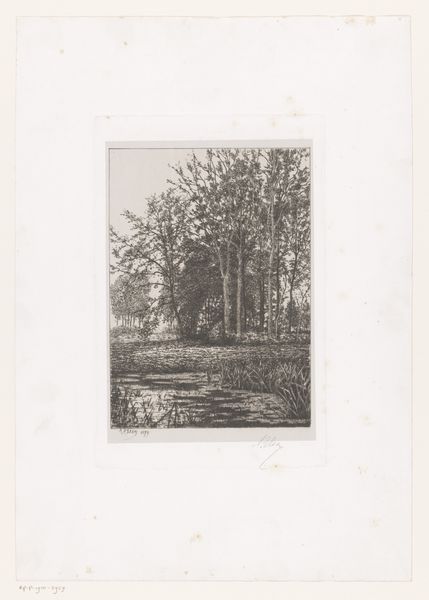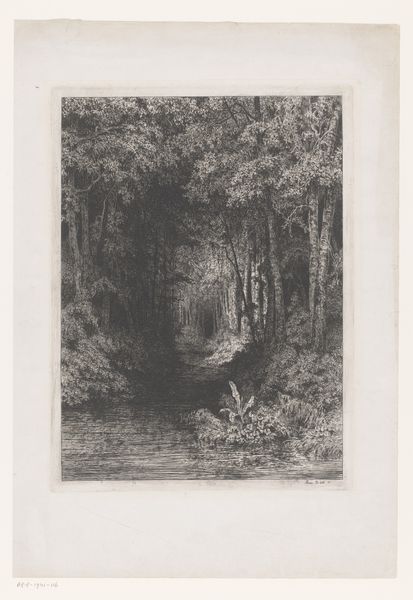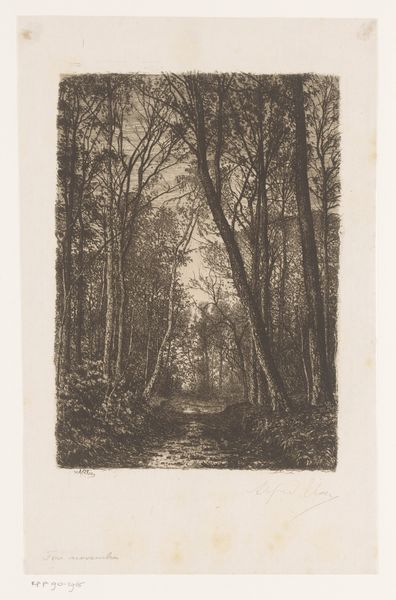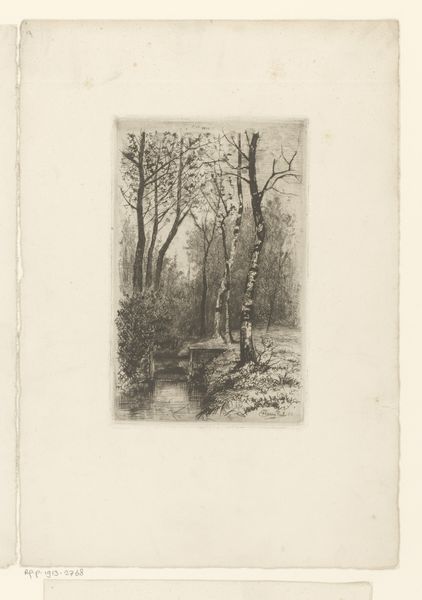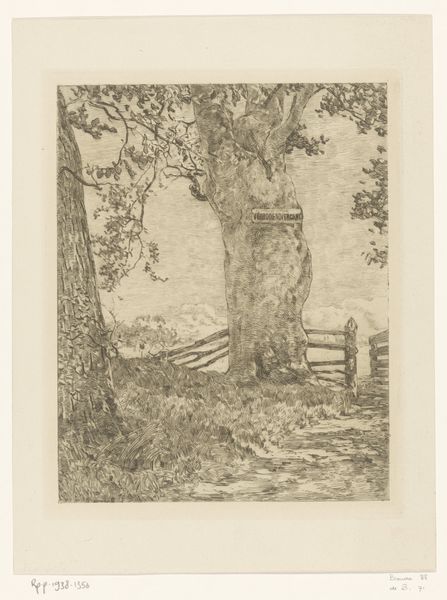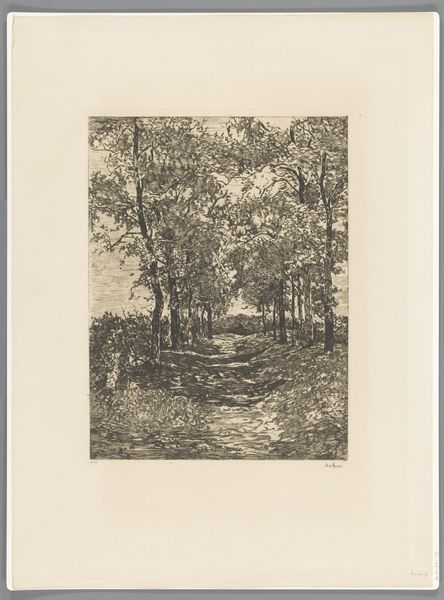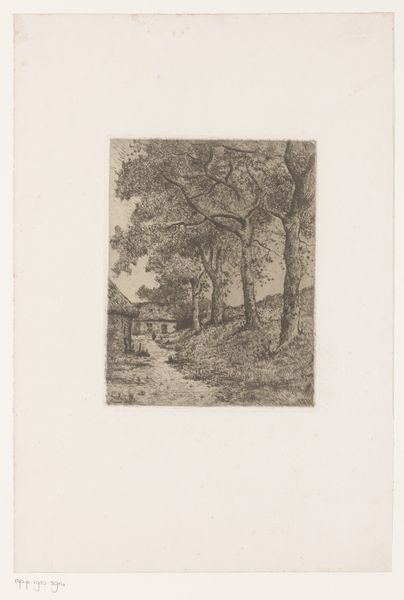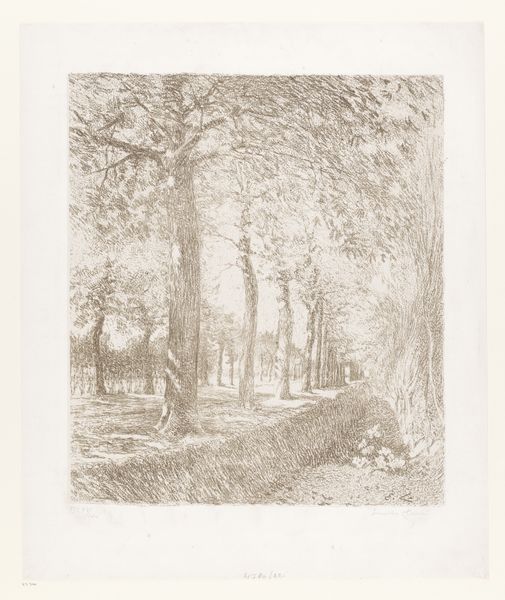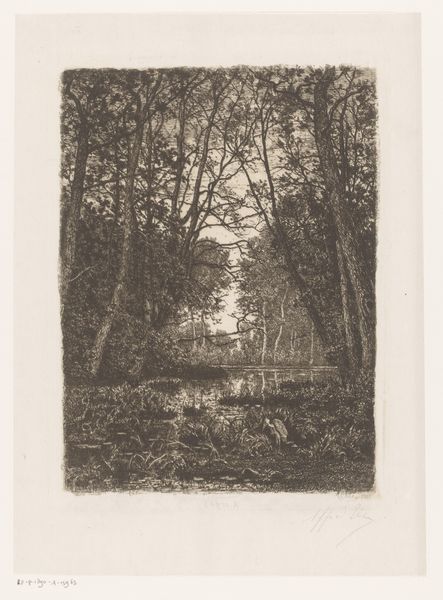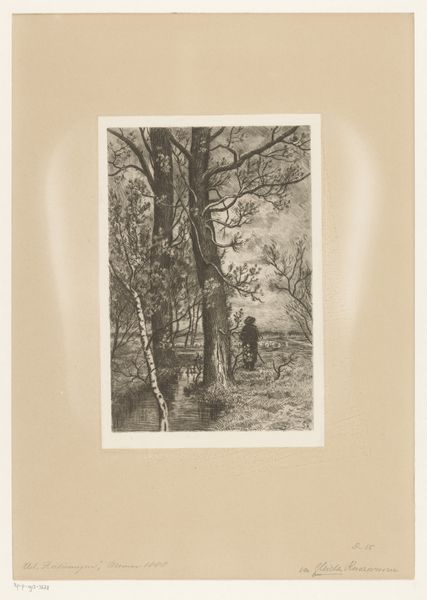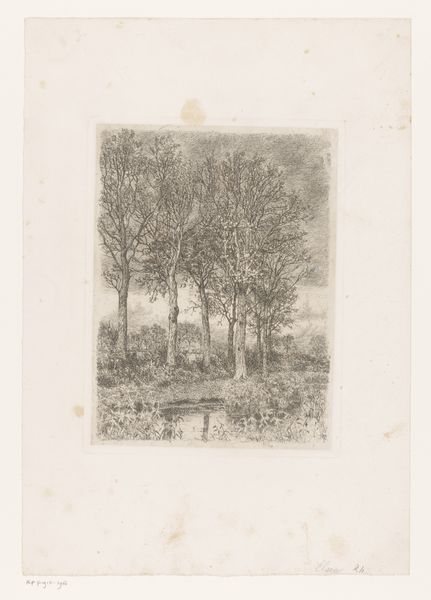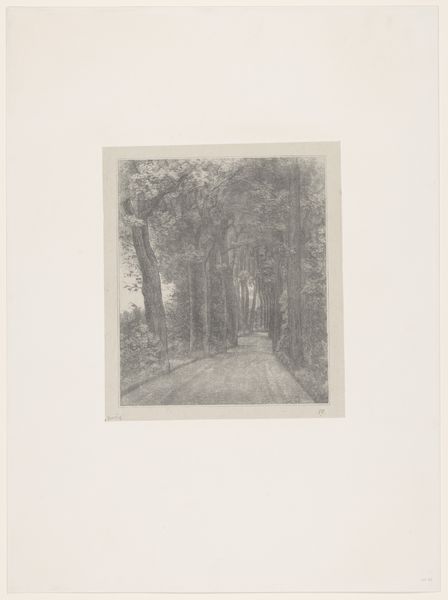
print, etching
# print
#
impressionism
#
etching
#
landscape
#
forest
Dimensions: height 237 mm, width 181 mm
Copyright: Rijks Museum: Open Domain
Editor: Here we have "Forest View with a Stream in the Middle," created sometime between 1860 and 1910. It's an etching, currently held at the Rijksmuseum. It strikes me as very dense and detailed. What stands out to you? Curator: I immediately think about the labor involved in creating this intricate scene through etching. Consider the process: the artist meticulously covering a metal plate, the precise movements to create the lines, the use of acid to bite into the metal, and the eventual printmaking. Do you think the chosen medium is adequate? Editor: The act of recreating a landscape through a labor-intensive printmaking process certainly does change the perception. Did this have consequences on the consumption of art at the time? Curator: Precisely! How does this accessibility affect the art market, and the artist's role in society? Was the original landscape privately owned and commodified? Editor: Good questions! Looking closer, the blurring and layering of lines creates a specific atmosphere. This etching allows a certain distribution of imagery. Who could have access to this image in this form? Curator: The commodification of the scene speaks to larger socio-economic forces at play, doesn’t it? We often overlook how material processes and accessibility reshape artistic interpretation and the audience experience. Editor: I see what you mean. Focusing on the material helps reveal so much more. Thanks for that perspective! Curator: My pleasure! It's crucial to remember that art doesn’t exist in a vacuum; it's entangled with production, labor, and consumption, all of which profoundly shape its meaning.
Comments
No comments
Be the first to comment and join the conversation on the ultimate creative platform.
